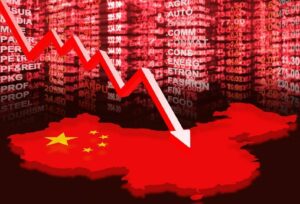
International rating agencies S&P Global and Fitch have downgraded their outlooks for China’s residential real estate market.
real estate, despite Beijing’s announced package of measures to support it.
S&P forecasts a 15% decline in housing sales in China this year, while earlier it expected a 5% decline. According to the agency’s forecast, published on Thursday, the volume of sales of residential real estate in the country will total less than 10 trillion yuan ($1.4 trillion) this year, about half the peak level recorded in 2021.
Fitch this week also worsened its forecast for home sales in the PRC: the agency now expects sales to fall by 15-20% this year, rather than the 5-10% previously estimated.
The lowered forecasts show that rating agencies are not confident in the success of a large-scale package of market support measures, the launch of which the Chinese authorities announced in May. In particular, it includes the abolition of the lower limit on mortgage rates, as well as lowering down payment requirements for real estate buyers using mortgages. In addition, Beijing urged authorities in cities with a surplus stock of ready-made houses to buy back properties at reasonable prices for later use as affordable housing.
Prices of new buildings in China’s major cities fell for the 11th straight month in May. According to a report by China’s State Statistics Office (SSO), the cost of new housing in the country’s 70 largest cities fell 3.9% year-on-year last month, the most since June 2015.
Real estate accounts for about 78% of Chinese residents’ wealth, Bloomberg notes.

The number of company defaults in January-February this year in the world reached 29 – the maximum since 2009, according to S&P Global.
Including in the U.S. the number of corporate defaults amounted to 17, in Europe – eight.
The global average for the same period in 2010-2023 slightly exceeds 16.
S&P attributes the rise in defaults to weak consumer demand, rising wages amid labor shortages and high interest rates.